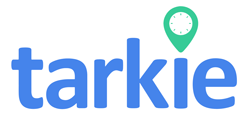Ever thought about how much better your business could be if you knew when and why your employees were there or not? Understanding attendance can be a big deal for companies aiming for top performance. It turns employee data into workforce insights that guide smarter choices and policies.
Looking into attendance patterns can lead to better staff accountability, productivity, and happiness. Companies using data well often see big gains in profits and work flow. For small businesses in the Philippines, using attendance analytics is key for growth and better performance. See how this approach can change your business.
Key Takeaways
- Attendance tracking is fundamental for informed workforce analytics.
- Data-driven decisions can improve productivity and job satisfaction.
- Effective attendance management can reduce absenteeism rates by 15-30%.
- Integrating attendance data can optimize scheduling and decrease overtime.
- Companies utilizing attendance analytics often see improved engagement metrics.
- Predictive analytics helps in preparing for future workforce needs.
- Real-time insights enhance decision-making around employee performance.
Understanding the Importance of Attendance Analytics
Attendance analytics is key to a business’s success. It helps companies track and analyze how often employees are present. This includes looking at how often they miss work and if they’re on time.
By using this data, businesses can spot trends that affect how well they operate. This knowledge helps them make better decisions.
Defining Attendance Analytics
Attendance analytics is about watching how employees show up to work. It uses tools to track their activities. This helps find ways to make things run smoother.
Having real-time data lets companies understand attendance better. This helps them make choices that improve how teams work together.
Why Attendance Matters for Business Performance
Good attendance is crucial for a business to do well. It helps keep employees happy and reduces the chance they’ll leave. This boosts productivity.
Using attendance data to encourage responsibility makes teams work better together. It also helps avoid legal problems by making sure everyone follows rules. Making decisions based on data is important in today’s fast world.
Key Components of Attendance Analytics
Understanding attendance analytics is key for better workforce management. Good strategies start with collecting data well and tracking attendance types. An attendance tracking system helps streamline processes and gives insights for better business performance.
Data Collection Methods
There are many ways to collect attendance data accurately. Digital clock-in systems and mobile apps are popular for real-time tracking. Using a system that includes these technologies has many benefits, such as:
- Following rules about working hours and time off
- Reducing fraud with biometric clocking systems, mainly in big companies
- Getting alerts for missed clock-ins, making attendance more accurate
- Cloud-based access for remote teams, making things more flexible
Types of Attendance Data to Track
It’s important to track different types of attendance data for good attendance policies. Key data includes:
- How often people are absent and why
- Patterns of being late and missing clock-ins
- Attendance rates by department
- Hours worked, overtime, and missed days
By looking at these metrics, companies can understand their workforce better. This leads to better use of resources and higher productivity. Combining good data collection methods and detailed attendance data is the base for smart decisions and effective management.

Transforming Data into Workforce Insights
Looking into attendance patterns can really help businesses. They can find trends that affect how well employees work and how happy they are. This knowledge helps companies make better plans for their teams, leading to better results.
Analyzing Attendance Patterns
Looking at how employees show up helps spot important trends. This includes noticing changes during holidays or big company events. With this info, companies can plan their staff better, avoiding too many or too few people.
Identifying Trends for Actionable Insights
Spotting trends in attendance gives companies useful tips for managing their teams. For example, seeing when lots of people are absent can show if there’s a problem. This might mean the job isn’t satisfying or there’s too much stress, leading to changes in the workplace.
| Attendance Metric | Analysis Benefits | Actionable Insights |
|---|---|---|
| Absenteeism Rate | Identifies disengagement levels | Improved employee morale strategies |
| Turnover Rate | Indicates employee satisfaction | Enhanced retention programs |
| Peak Attendance Periods | Highlights staffing needs | Optimized scheduling to avoid overtime |
| Training Hours | Measures training effectiveness | Investment in employee development |

Leveraging Attendance Analytics to Enhance Employee Accountability
Companies looking to boost employee accountability can gain a lot from attendance analytics. These tools help set clear roles and responsibilities. They give insights that make team members accountable for their attendance.
Knowing how attendance affects work performance helps both employees and managers. It creates a more accountable workplace.
The Role of Employee Responsibilities
Setting clear attendance expectations helps build a reliable culture. Attendance analytics help pinpoint areas where employees need to improve. Metrics like tardiness and absenteeism show where to focus.
Policy Guidelines and Implementation
Strong policies are key to better attendance. Data helps create policies that tackle common issues. For example, late employees might get special support.
Data also shows trends that help update policies. Regular reviews of policy guidelines based on data keep them effective.

Improving Policy Enforcement Through Attendance Data
Effective policy enforcement depends on detailed attendance data. By studying this data, companies can craft policies for each department. This method boosts accountability and employee engagement, as staff feel their work environment is considered.
Creating Department-Specific Policies
Attendance data helps companies make policies that fit each department’s needs. For instance, it shows when certain teams are absent more often. This lets organizations set rules to improve attendance during important times. Key steps in making these policies include:
- Understanding attendance patterns and their impact on departmental productivity.
- Ensuring clear communication about policy expectations.
- Highlighting the need to follow workplace regulations.
Balancing Flexibility with Workplace Regulations
It’s important to balance flexible scheduling with strict rules. Companies can offer flexible policies that help employees meet personal needs while following company rules. This approach creates a supportive work place while keeping rules in place. Consider these points to improve this balance:
- Regularly check attendance data to spot trends and act quickly.
- Use self-service attendance features to simplify leave requests for employees and HR.
- Be open about attendance management to build trust and fairness in teams.

By focusing on both enforcing policies and meeting employee needs, companies can increase happiness and lower turnover. A mix of department-specific policies and strict rules creates a welcoming place for all. It celebrates different employee situations while keeping operations running smoothly.
Using Attendance Analytics to Manage Time-Off Efficiently
Managing time-off well means understanding attendance analytics and how they fit with different roles in the company. A good time-off plan respects each person’s duties and makes sure leave is used well. This not only makes attendance better but also makes the workplace better, helping the business do well.
Designing a Time-Off Management Strategy
To make a great time-off plan, follow these steps:
- Make clear rules about how much leave employees get.
- Send reminders to help employees plan their leave on time.
- Look at attendance data to see who is absent often.
- Use systems to keep track of leave, so it doesn’t get too busy.
- Talk about policies and changes often to keep everyone informed.
Understanding Role Descriptions and Responsibilities
Being clear about what each role does is key to good time-off management. It’s important to know how each job affects attendance and teamwork. Knowing what each person does helps managers:
- See how missing work affects the team’s work.
- Plan staffing for important times well.
- Keep track of who is absent often, which helps with planning.
Using attendance analytics in daily work helps companies make better time-off plans. This way, they can plan better and create a workplace where everyone feels important and involved.
Driving Engagement with Attendance Customization
Customized attendance policies are key to boosting employee engagement. They recognize individual needs and help achieve a better work-life balance. By using attendance analytics, companies can create policies that meet unique staff needs. This leads to a more engaged workforce.
Personalizing Attendance Policies for Employees
Companies that focus on customized attendance see a big jump in employee engagement. They offer flexible working hours or remote work options, making employees feel valued. For example, financial firms using Dayforce analytics saw a 10% boost in attendance in a few months.
Personalized policies lead to higher job satisfaction and lower turnover rates. Engaged employees perform 20% better than those who are not. This shows the power of engagement-driven policies.
Enhancing Work Flexibility through Data
Data helps companies offer work flexibility that fits employees’ personal lives. By looking at absenteeism and turnover data, they can spot issues affecting well-being. For instance, a healthcare company improved work-life balance and patient care by restructuring schedules.
This flexibility boosts employee engagement and productivity. By letting team members adjust start times based on data, businesses meet personal needs while keeping operations smooth.
Case Studies: Companies Who Successfully Used Attendance Analytics
Many companies worldwide have used attendance analytics to see big improvements. This section looks at success stories from the Philippines and around the world. It shows how data-driven approaches can change businesses for the better.
Success Stories from the Philippines
Globe Telecom in the Philippines is a great example. They used attendance analytics to boost employee performance and happiness. This shows how analytics can really help companies manage their workforce better.
Global Examples of Transformation
Big names globally have also seen big changes with attendance analytics. Starbucks, for example, sped up service by 20% with smart scheduling. Johnson & Johnson cut turnover by 20% in three years with predictive analytics. These stories show how companies are changing their work practices for the better.
| Company | Outcome |
|---|---|
| Globe Telecom | Enhanced employee performance and satisfaction through data-driven attendance systems. |
| Starbucks | 20% increase in service speed with smart scheduling based on attendance data. |
| Johnson & Johnson | 20% reduction in turnover rates via predictive analytics for compliance. |
| Cleveland Clinic | Improved employee retention by 15% with flexible schedules and wellness programs. |
| Mellow Mart | Increased overall sales by 20% during slow periods through attendance pattern analysis. |
Overcoming Challenges in Implementing Attendance Analytics
Using attendance analytics can change a company for the better. But, there are often big challenges. Issues like resistance to new tech, not enough data, and a lack of skilled people can get in the way. If these problems aren’t fixed, they can block the good things that come from using data wisely.
Common Barriers to Effective Use
Many employees struggle with change, feeling uneasy about new systems or tech. Also, bad data can lead to mistakes, and not having the right people to understand data can be a problem. These issues can make it hard to use analytics well, slowing down progress in keeping employees happy and productive.
Strategies to Address These Challenges
To beat these challenges, companies need good plans. They should create training that helps people understand data better. Choosing easy-to-use attendance systems and talking about the good things analytics can do can also help. With these steps, companies can improve how well they work together and make their employees more productive.
